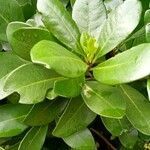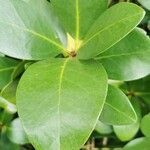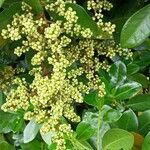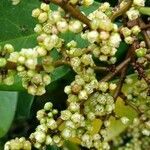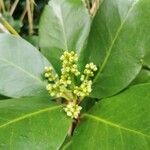An evergreen tree. It grows 6-9 m high but can be 16-20 m high. The trunk can be 60 cm across. The crown is dense and rounded. The leaves are broad and leathery. They can be 7-20 cm long. The flowers are small and yellow and occur in clusters. The fruit are orange-yellow. They are 1.8-3.8 cm long. Each contains a large highly poisonous seed. It was eaten after careful treatment.
